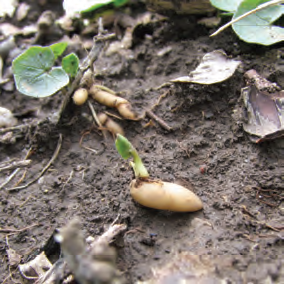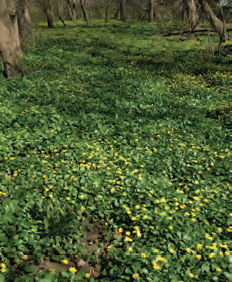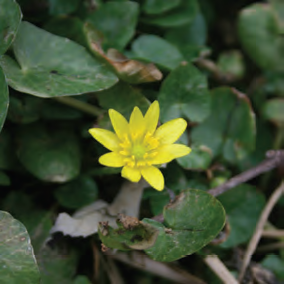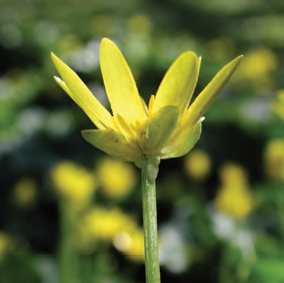Lesser Celandine
Ranunculus ficaria
Buttercup Family (Ranunculaceae)
Perennial Herb
Flowers: Mar–May
Native Range: Northern Europe
Introduction: as an ornamental
Mid-Atlantic Range & Habitats Floodplains, open forests, and meadows, mostly in the Piedmont, and widely scattered farther west.


Dense stands of early spring foliage inhibit growth of other spring ephemeral plants by competing for light, nutrients, and space. Acres of ground in floodplain forests may be carpeted entirely by this species. Spring wildflowers such as Virginia Bluebells, Toothworts, Dutchman’s Breeches, Trout Lily and Bloodroot are threatened by Lesser Celandine invasion.

Quick ID
- Roots: Roots with many tubers
- Stems: Bulblets forming at the nodes of stems
- Flowers: With 3 green sepals and 7–12 yellow- white petals
More ID Tips
Lesser Celandine and Marsh-marigold are spring ephemerals with similar yellow flowers and shiny green, cordate leaves. Other species of Ranunculus seldomhave cordate leaves. The flowers of Marsh-marigold are uniformly yellow in color, but those of Lesser Celandine can be variable with white blotches and stripes across the petals and various doubled-flowered forms. The leaves of Lesser Celandine also have various color forms.


